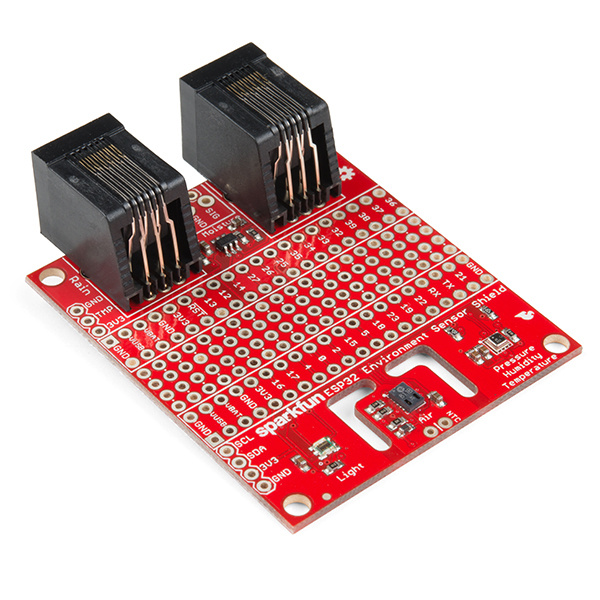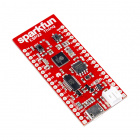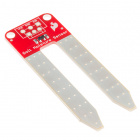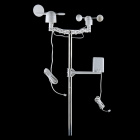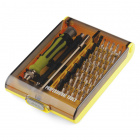ESP32 Environment Sensor Shield Hookup Guide
Introduction
The ESP32 Environment Sensor Shield provides sensors and hookups for monitoring environmental conditions. This tutorial will show you how to connect your sensor suite to the Internet and post weather data online.
Required Materials
You'll need the ESP32 Thing board to interface with this shield. Other microcontroller boards will work, but since the shield is designed to stack on the ESP32 Thing, interfacing with them will be difficult.
You'll also need some means of connecting the two boards together. While it's possible to solder them together using snappable male header pins, it makes good sense to use female headers on one of the boards board so the boards can be separated again later if needed.
The ESP32 Environment Sensor Shield comes with connections for our weather station. You may also wish to add a soil moisture sensor, which you'll need two three-position 3.5mm screw terminals and enough wire to connect the sensor to the board.
Weather Meters
SEN-08942Tools
At a minimum, you'll need a soldering iron and some solder. You may need a small screwdriver for attaching the wire to the screw terminals between the soil moisture sensor and the sensor shield. Our pocket screwdriver and screwdriver kit both have bits that will work wonderfully for that purpose. They're also just handy to keep around!
Suggested Reading
If you have not yet used the ESP32 Thing Development Board, check out this guide first.
ESP32 Thing Hookup Guide
If you intend to use wind and rain Weather Meters with your ESP32 Environment Sensor Shield, check out our Weather Meter Assembly Guide.
Weather Meter Hookup Guide
If you aren't familiar with the following concepts, we recommend checking out these tutorials before continuing.
